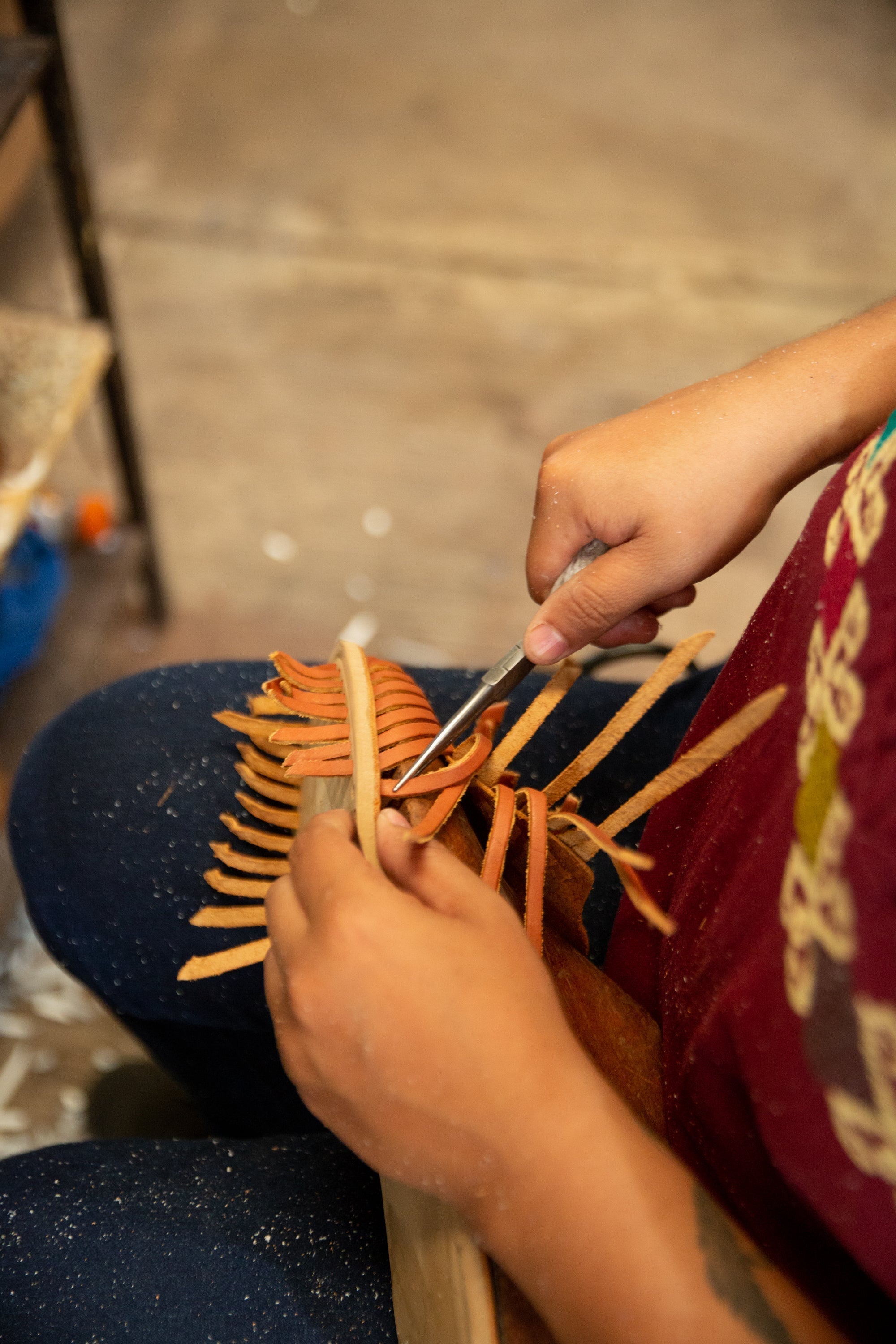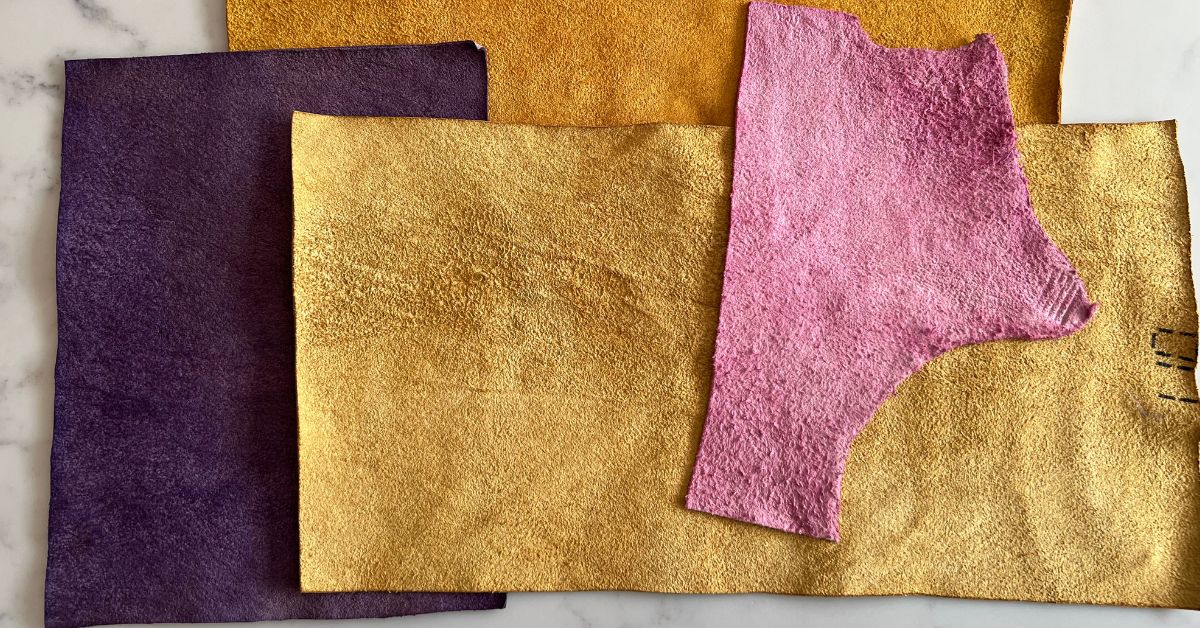Article: Cultural Influence in Modern Fashion: The Rising Trend of Handcrafted Accessories

Cultural Influence in Modern Fashion: The Rising Trend of Handcrafted Accessories
We at Espiritu have always believed in preserving cultural heritage. Our passion for huaraches stems from the centuries-old crafting traditions that reflect the history, artistry, and spirit of our community. For us, embracing cultural heritage goes beyond simply making shoes: it is a commitment to honor the methods passed down through generations and ensure their relevance in the modern world. As we have continued to grow, we have delved deeply into the roots of cultural craftsmanship—specifically, the role it plays in shaping contemporary fashion. This blog post aims to explore how traditional crafts are influencing modern style, highlighting why more and more consumers gravitate toward accessories that carry a rich cultural narrative.

The Power of Cultural Heritage in Fashion
Cultural heritage is more than an abstract idea—it shapes identities and traditions, strengthens communities, and serves as a marker of shared history. In fashion, cultural heritage often appears in the form of textiles, motifs, dyeing techniques, and artisanal skills. Around the globe, these traditional crafts are increasingly spotlighted in mainstream and luxury markets alike, finding renewed life in modern clothing and accessories. By merging heritage with contemporary trends, artisans and designers forge deeper connections between the past and the present.
In Mexico, for instance, huaraches are historically significant footwear that have grown into cultural icons. Similarly, other regions of the world have cherished traditions like intricate beadwork, handwoven fabrics, or embroidery that define local identity. According to research compiled by various cultural organizations and universities, many designers are now moving away from mass-production models and instead partnering with local craftspeople. This shift underscores not only a desire to showcase the beauty of age-old techniques but also a growing consumer preference for sustainable, ethically produced, and culturally significant goods.

Handcrafted Accessories on the Rise
A notable outcome of this global focus on heritage is the recent surge in handcrafted accessories. From hand-tooled leather bags to embroidered scarves and beaded jewelry, these items reflect time-honored craftsmanship and personal artistry. There is growing acknowledgment that true luxury lies in exclusivity, authentic narratives, and craftsmanship rather than in logos or mass-produced designs.
For brands, handcrafted accessories not only add uniqueness to their product range but also create stories their customers can relate to. Traditional craftspeople bring specialized skills, often learned over multiple generations, to produce these intricate pieces. Whether they are hand-stitched bags from Italy, finely woven fabrics from West Africa, or huaraches from Mexico, the one-of-a-kind nature of handcrafted items stands out in a marketplace saturated with identical, assembly-line products.
Increasingly, those who purchase these products also appreciate the cultural journey behind them. The lace from a small town in Europe or the woven patterns from a rural region in Asia are narratives woven into the product itself. Consumers sense the heritage embedded in each stitch, knot, or weave. For many, owning these accessories is akin to owning a piece of cultural history, adding depth and meaning to personal style.

Bridging Tradition and Contemporary Design
One of the most fascinating aspects of cultural influence in fashion is the delicate balancing act of innovation and preservation. Designers must respect time-honored techniques while making sure the products resonate with modern audiences. That often entails reinventing color palettes, experimenting with new materials, or fusing different styles—an approach that can be seen in everything from conceptual runway collections to laid-back bohemian street style.
For instance, huaraches have traditionally been made with woven leather straps, often dyed using natural pigments. Modern adaptations like ours include new silhouettes, cushioning technologies for enhanced comfort, and trendy color combinations that appeal to younger demographics. Similar processes occur worldwide: a small African label might combine local block-printing methods with contemporary cuts to produce fresh, vibrant designs, while an Indian artisan brand could blend centuries-old embroidery styles with minimalist silhouettes tailored to global trends. These bold reimaginings do not dilute the craft’s origins; in fact, they help ensure the art form remains relevant and, most importantly, continues to thrive economically.
Such synergy has also led to unexpected collaborations between craftspeople and high-end fashion houses. The outcome is a fascinating array of accessories that blend luxury branding with the unique details of ancient techniques. On a macro scale, we see crafts moving beyond regional markets and entering international runways, e-commerce platforms, and concept stores, opening fresh channels for cultural exchange and appreciation.

Why Consumers Crave Rich Cultural Narratives
The surge in demand for handcrafted accessories is not accidental; multiple societal and psychological drivers contribute to this shift. First, consumers have grown more conscious of the ethics behind their purchases. Documentaries, journalistic investigations, and social media campaigns reveal the wastefulness and exploitation tied to fast-fashion. This newfound awareness nudges shoppers to look for alternatives that emphasize sustainability, fair wages, and preserving cultural traditions.
Second, contemporary lifestyles encourage personal expression. In an era where social media can inundate us with repetitive, mass-market aesthetics, distinctiveness has become a luxury. Accessories featuring handcrafted details—like the iconic weave of a huarache or the meticulous embroidery of a traditional blouse—offer that sense of individuality. By showcasing unique cultural elements, wearers can express admiration for artistry and heritage, aligning themselves with a broader global narrative of respect for tradition.
Moreover, purchasing handcrafted goods can create emotional bonds. Wearing a pair of artisanal huaraches or a hand-beaded necklace feels different than using a mass-produced item. The buyer often knows (or can easily learn) the story behind the item: perhaps a family of artisans worked on it, or an indigenous community used techniques passed down through the centuries. This connection goes beyond superficial style, fostering a sense of pride, respect, and responsibility to honor the cultural tradition from which the item originates.

Cultural Influence and the Luxury Sector
The luxury sector has also taken note of the growing enthusiasm for artisanal and culturally influenced items. While historically, luxury brands relied heavily on brand name and exclusivity, consumers today often demand more depth. Successful luxury brands have sought to integrate artisanal values—particularly craftsmanship and heritage—into their brand narrative.
This integration is, in part, a response to the evolving definition of “luxury.” Where once ostentatious displays of wealth might have sufficed, modern luxury buyers seek meaning, experience, and a sense of social responsibility. Owning items that have genuine cultural significance or that support artisanship resonates deeply with individuals who want their purchases to align with their personal values. Therefore, collaborating with local artists, preserving age-old techniques, and telling authentic cultural stories have become key elements of many high-end collections.

The Socioeconomic Impact of Preserving Craft Traditions
Embracing handcrafted accessories is not just a matter of aesthetics; it carries important socioeconomic implications. Communities that are committed to preserving their local crafts—be it leather weaving for huaraches or specialized textile dyeing—often rely on that work for economic sustenance. By integrating these crafts into modern fashion, brands create stable opportunities for artisans. This helps maintain cultural heritage, since the passing of knowledge from generation to generation remains profitable and sustainable.
Furthermore, when global audiences become aware of and invest in these products, the resultant cultural exchange helps break down stereotypes and fosters respect. Consumers learn about the proud traditions embedded within the product, while artisans gain exposure to international markets. In this way, fashion becomes more than just commerce—it becomes a medium of cultural dialogue and mutual enrichment.

Challenges on the Path to Modernization
While the synthesis of culture and contemporary design is inspiring, it also introduces certain challenges. One common issue is cultural appropriation—when brands or individuals use designs or symbols without recognizing their cultural significance or giving back to the community of origin. This stands in stark contrast to the respectful incorporation of heritage that involves fair compensation and genuine collaboration with artisan communities.
Additionally, mass commercial appeal can sometimes dilute the original character of the craft. If demand grows too quickly, there is a risk that artisanal processes will be replaced by cheaper, faster methods, undermining the authenticity that made the craft appealing in the first place. Hence, producers and buyers alike must remain vigilant. True sustainability requires maintaining the integrity of artisanal methods and ensuring that artisans benefit directly from the growth of their craft’s popularity.

Looking Ahead: Opportunities for Growth and Innovation
The future of culturally influenced fashion lies in thoughtful innovation, collaboration, and education. By raising consumer awareness, brands can highlight the true value of handcrafted accessories, bridging the gap between tradition and modern trends. Investing in educational programs—whether on local or global scales—ensures that new generations of artisans are trained, preventing these valuable skills from vanishing.
For Espiritu, the road ahead involves continuing to refine our designs without losing sight of our roots. We remain committed to supporting the artisans who meticulously weave each pair of huaraches, ensuring that every product embodies the spirit of our heritage. We also see collaborations with other cultural crafts as a promising path, exchanging knowledge with artisans from around the world to develop new techniques and fresh expressions of traditional art.
Ultimately, the journey is about honoring the past while embracing the present, and inspiring others to do the same. Cultural heritage, when respected and given room to evolve, can flourish as both a meaningful art form and a catalyst for innovation in global fashion.

Conclusion
Modern fashion, especially in the realm of accessories, has witnessed a remarkable renaissance of heritage crafts. Consumers today desire items with stories—pieces that not only fulfill a stylistic purpose but also preserve traditions, empower artisans, and connect cultures. In our own journey as a huarache brand, we have seen firsthand how weaving together centuries-old techniques with contemporary elements results in footwear that is timeless, unique, and ethically responsible. Beyond the huarache, similar principles apply to every handcrafted accessory, whether it is a handcrafted leather belt, an embroidered bag, or hand-beaded jewelry.
This trend, far from being a fleeting fad, underscores a deeper movement toward authenticity, sustainability, and respect for cultural diversity. By investing in products that showcase artistry and tradition, shoppers become participants in a richer global narrative—one that cherishes the past, shapes the present, and paves the way for future generations of craftspeople.
As cultural heritage continues to influence modern design, the fashion world can become a powerful platform for storytelling, cross-cultural interaction, and meaningful economic development. For our part at Espiritu, we remain resolute in our mission: to preserve and elevate the spirit of artisanal craftsmanship, ensuring that huaraches—like many other treasured cultural icons—continue to inspire and captivate for generations to come.
Check out our blogpost post at our instagram @espirituculture, and if you want to be part of the community and the conversation, tag us using #espiritutribe. We can't wait to see you there!


